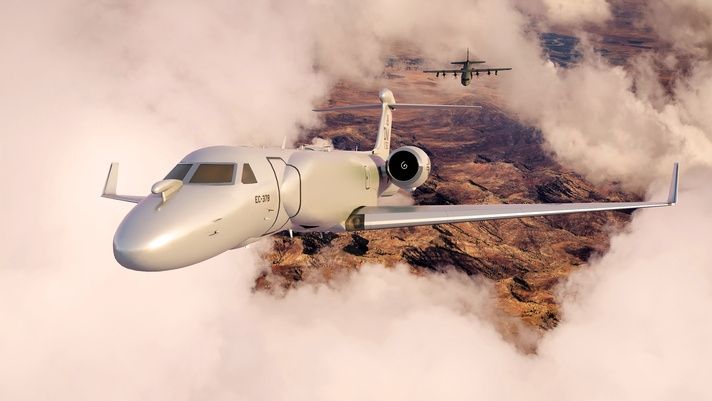
Reflecting the vital importance of the program, the newly released FY25 U.S. defense budget includes steady funding for the evolving Compass Call electronic attack aircraft effort. For the electronic warfare platform, the Air Force funds an RDT&E program that supports operational system development, and technology enhancements that will be added to Compass Call on a regular basis. Additionally, a procurement program funds all critical software and component modifications as well as all-important, new platform purchases.
For the RDT&E element, $626 million has been allocated for the next five years. For the procurement line, over $1 billion is earmarked for the same time period.
Compass Call missions disrupt voice and data communications, preventing adversaries from effectively commanding and controlling their forces in the field. Sorties are flown primarily in support of tactical air operations, but can also be used to provide information to ground and sea forces. Operators employ “surgical” jamming to prevent specific communications or to degrade the transfer of information essential to the command and control of weapons systems and other resources.
In July 2018, prime contractor BAE Systems began work on transitioning Compass Call systems from the decades-running EC-130H aircraft to a more modern platform. Under this initiative, the company is transitioning the older plane’s capabilities onto a special mission Gulfstream G550, known as the EC-37B.
Originally, the 14-plane EC-130H fleet was going to be replaced by only 10 EC-37Bs. In an acknowledgment of the critical importance of the program, funding was added to the procurement for more platform purchases. The current plan calls for 10 EA-37B aircraft, two Compass Call Mission Crew Simulator (CCMCS), and one Weapon System Trainer (WST).
In September 2023, BAE Systems along with prime integrator, L3Harris, delivered the first EC-37B to the U.S. Air Force for formal, combined developmental and operational testing.
Plans for future updates call for the operating altitude and standoff distances of the EC-37B airframe to be significantly increased.
Andrew Dardine is lead analyst for Forecast International's Defense Electronic Systems group. He is the primary author of Forecast International's Electronic Warfare Forecast and co-author of Electro-Optical Systems Forecast and C4I Forecast. Andrew is also a regular contributor to FI's Defense & Security Monitor blog, offering insights into developing technologies such as directed-energy and next-generation jamming systems. His analysis of such vital market areas as EO/IR systems and electronic countermeasures technology has been cited in Defense News, Aerospace Daily, and Bloomberg Businessweek, among other news media. He has also written about the electronic defense market for Aviation Week and the Journal of Electronic Defense.




